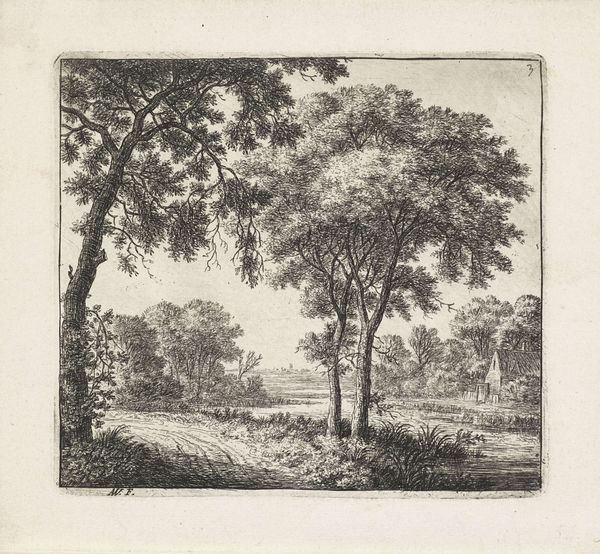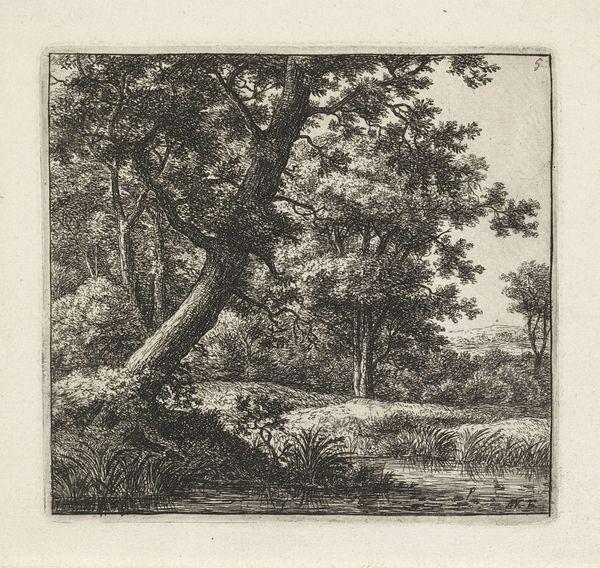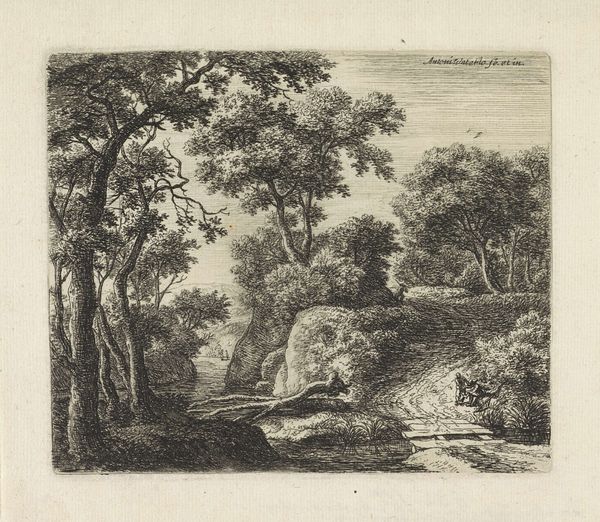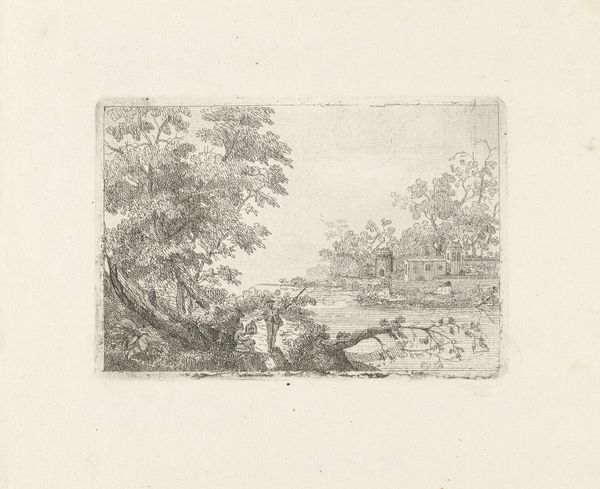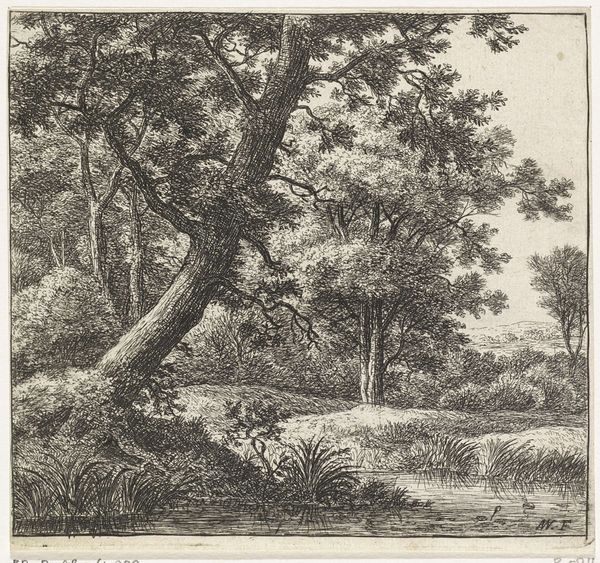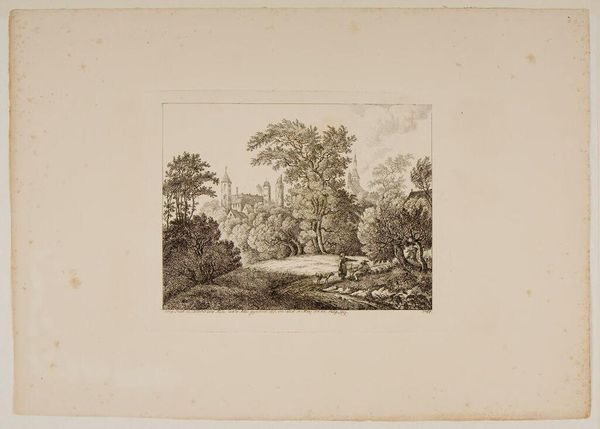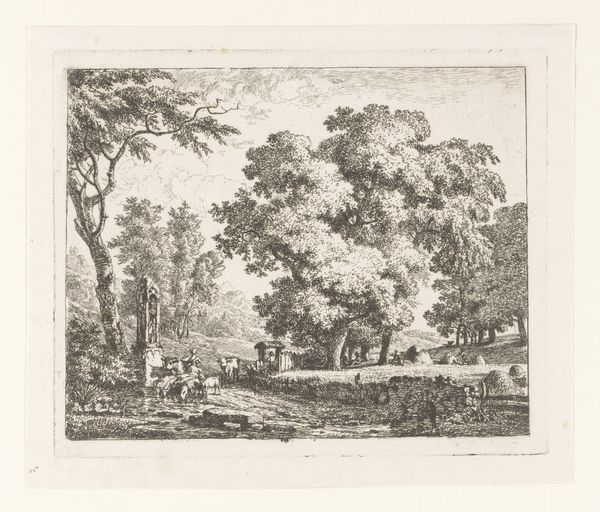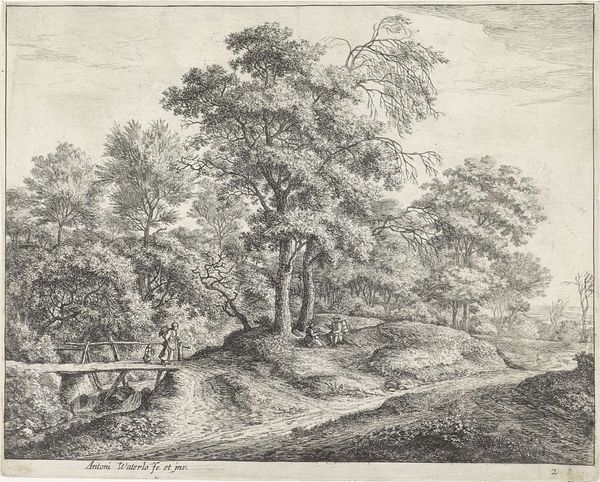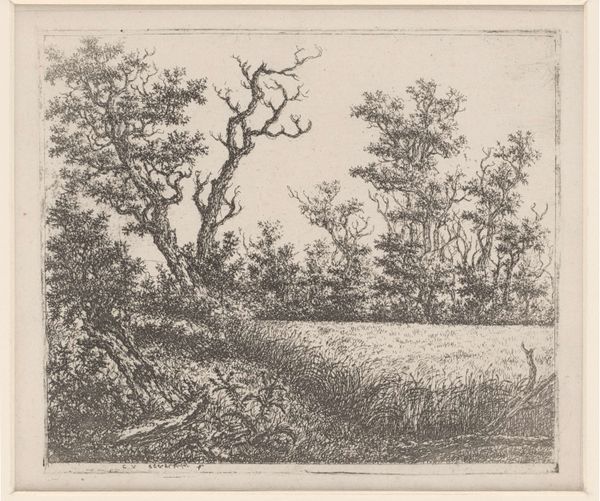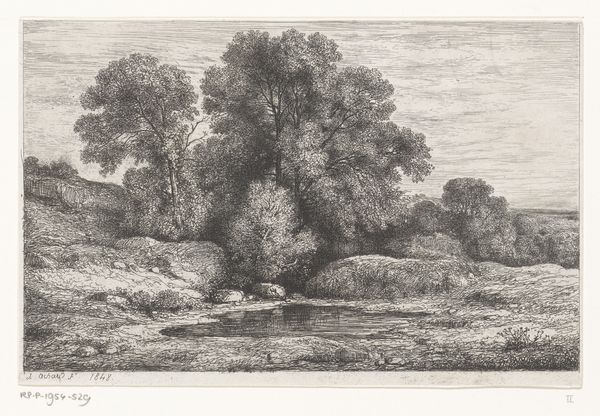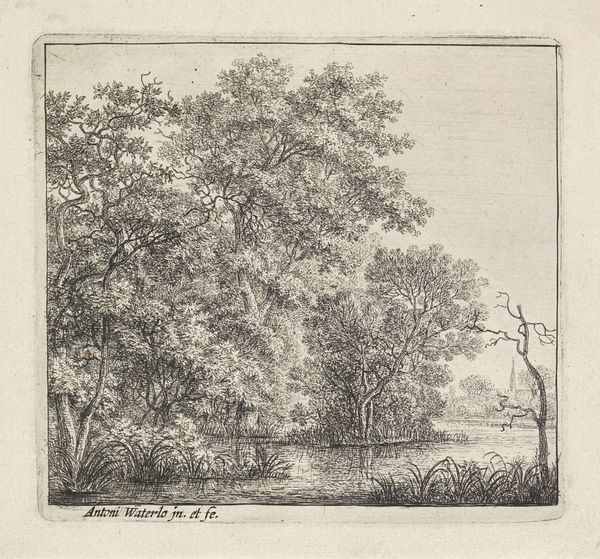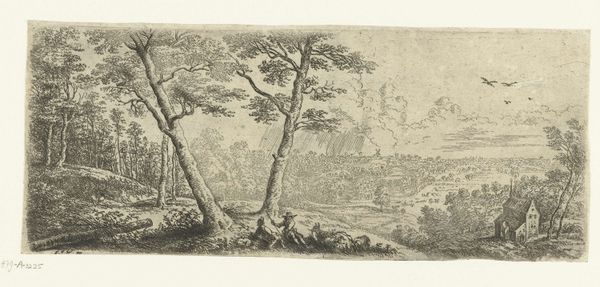
drawing, etching
#
drawing
#
baroque
#
dutch-golden-age
#
etching
#
landscape
#
forest
#
line
Dimensions: height 129 mm, width 140 mm
Copyright: Rijks Museum: Open Domain
Editor: Here we have Anthonie Waterloo's "Overhangende boom," made between 1630 and 1663, an etching currently residing in the Rijksmuseum. It strikes me as very detailed, with a lot of emphasis on the lines that create depth. How do you interpret this work purely from its formal elements? Curator: Indeed. Observe how Waterloo utilizes line—the density, the variations in thickness—to define the forms. The light isn't necessarily about mimetic representation, but rather a structural tool. Do you notice how the layering of lines creates a sense of space, guiding the eye through different planes of the composition? Editor: I see what you mean. The foreground has more intense, tightly packed lines compared to the background, making it feel closer. What's the effect of having the main tree at such an angle, dominating the frame like that? Curator: Its diagonal positioning injects dynamism into the otherwise static scene. It disrupts the horizontal plane, forcing the viewer's gaze upwards, creating tension. Consider how that tension interacts with the balanced distribution of light and shadow. Where does your eye naturally rest? Editor: It pulls me towards the brighter area in the mid-ground, almost like the forest is opening up. It's a very deliberate path that Waterloo created, isn’t it? The details within the foliage also invite me in to have a closer look. Curator: Precisely. By deconstructing its formal language, we can start to truly see the structural integrity and the mechanics that invite exploration. The surface acts almost as a microcosm of something much greater. Editor: Thinking about the strategic use of line and space, I understand now how much Waterloo achieved with such a simple composition. Curator: And sometimes the greatest complexities exist within such constraints. Thank you for your astute observations.
Comments
No comments
Be the first to comment and join the conversation on the ultimate creative platform.
